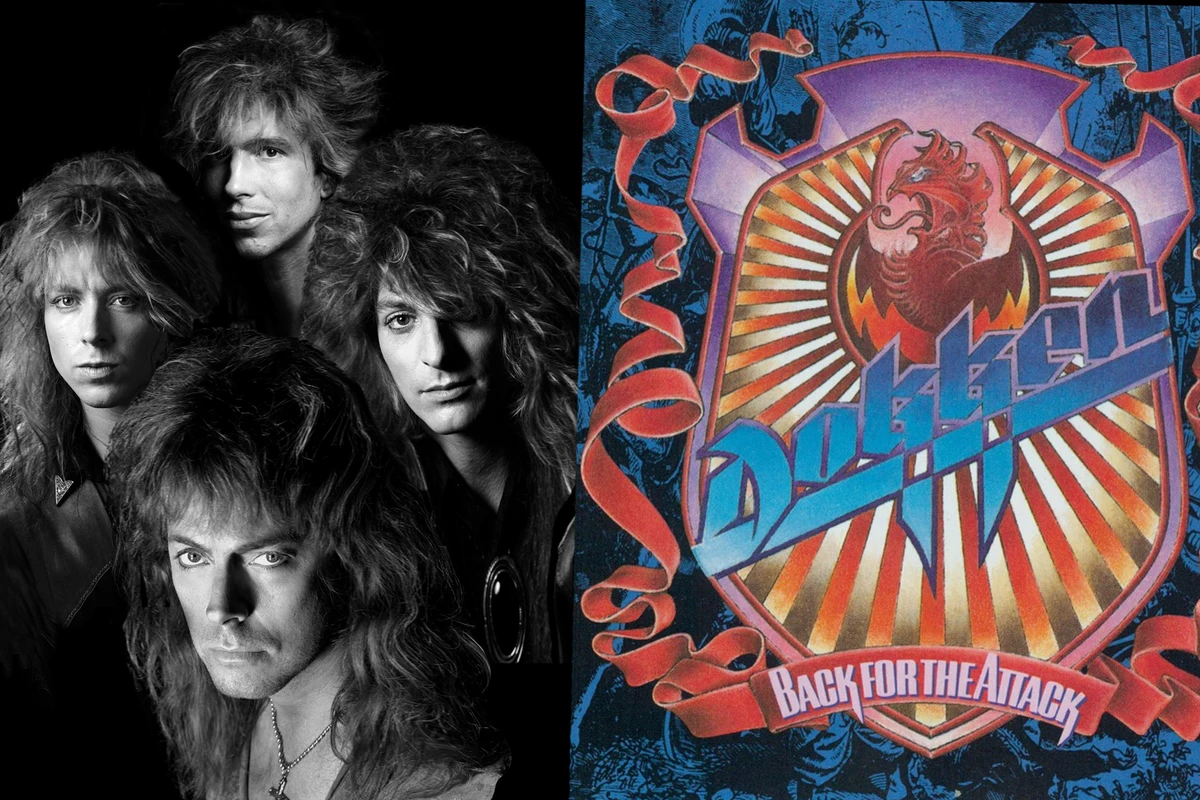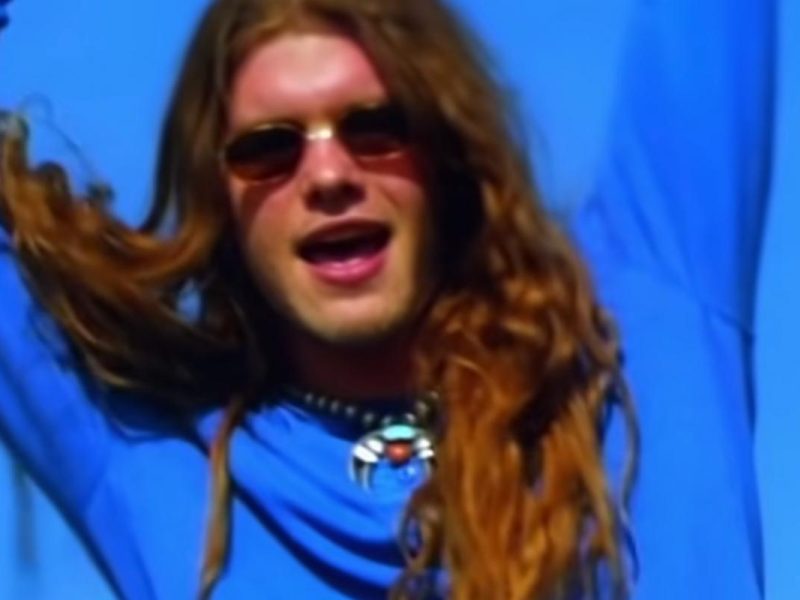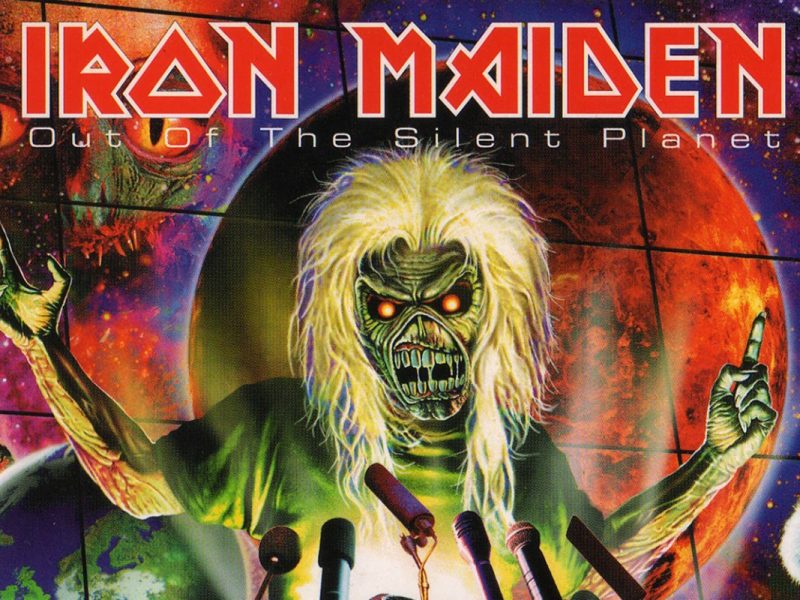George Lynch says that during Dokken’s first go-round, the band approached every album “like it would be our last one.”
Back for the Attack looked like it would be exactly that – at least for a while.
The melodic hard-rock quartet’s fourth album, which was released on Nov. 2, 1987, came out riding a wave of great momentum. Its predecessors had each done better on the charts and at the cash register, and Dokken ruled rock radio with songs like “In My Dreams,” “The Hunter,” “Breaking the Chains” and “Into the Fire.” Just in front of Back for the Attack, the group scored again with “Dream Warriors,” the title theme for Wes Craven’s Nightmare on Elm Street 3: Dream Warriors.
All of that would help propel Back for the Attack to Dokken’s highest position on the Billboard 200 (No. 13) and their quickest ride to platinum status. But a combination of challenging interpersonal dynamics, drugs and a rigorous work schedule undermined what should have been another triumph for the band.
Watch Dokken’s ‘Dream Warriors’ Video
“It was very, very tense, the making of that record,” bassist Jeff Pilson tells UCR. “We went into the album less organized than we were on the record before [1985’s Under Lock and Key], less together. There were a lot of drugs happening by this point, and it was just not a very healthy scenario. There was a lot of dissension going on in general, and in the recording studio it wasn’t much better.”
Frontman Don Dokken felt the same way, telling biographer Martin Popoff, “I don’t think it’s a very good album. I think there were two or three good songs, which were the singles, and there was a lot of filler. It’s a long album, and there’s a lot of masturbatory guitar playing.” He also cited the band members’ drug use, especially cocaine, for prolonging the sessions and detracting from the focus on the material.
An internal battle was certainly raging inside Dokken at the time, in the form of a growing schism between Don Dokken and Pilson, Lynch and drummer “Wild” Mick Brown. The latter three were living in Phoenix while Dokken was in Los Angeles and feeling isolated. “That’s when things started with, ‘I don’t want Don in the studio,'” Dokken told Popoff. “I submitted my songs from my house and they learned them, and I wasn’t even around for rehearsals.” Lynch and Pilson say they understood Dokken’s feelings but also contend that he was deliberately keeping a distance from them, for reasons that became clear later.
But while much has been made of the creative push-and-pull between Dokken and Lynch – usually refereed by Pilson – both claim that there was never outright rancor or animosity.
“We’re two different people, George and I,” Dokken told UCR in 2016. “I don’t hate him and he doesn’t hate me. … I don’t believe in hating. George and I were just very different people and there was tension from the day we started playing together. It was very rough.” Lynch now maintains that “we co-existed very well together. As people we worked hard, we joked around. We had a lot of fun, actually. We accomplished a lot together.”
Back for the Attack already had a bit of liftoff thanks to “Dream Warriors,” although there was some conflict there, too. Dokken and the team of Lynch and Pilson submitted different songs, with the latter ultimately being chosen. Nevertheless, Pilson says, “Don came through with an incredible vocal. That was a tough song, vocally; I had sung it on the demo and I wasn’t really sure how Don was gonna react to it, but everyone was excited and we made it work. That’s what you really want in a band. You wanted guys to spur each other on. That was a case where we really became a unit.”
There were other moments like that during the songwriting process; Pilson specifically remembers the opening track, “Kiss of Death,” when Dokken came to Phoenix and wrote lyrics referencing the AIDS crisis in the bassist’s condominium after hearing the track Lynch and Pilson had prepared. “That was magic,” Pilson remembers. “It was like, ‘Wow, this is a band collaborating. This is people working together.’ There were other moments like that – just not enough of them. The emphasis on the music never went away, but we were falling apart enough that there wasn’t the cohesion that we needed.”
Listen to Dokken’s ‘Kiss of Death’
Dokken, the others recall, was also miffed that Back for the Attack lacked a showcase ballad, even though he had presented one to the band. “It kind of got nixed, because we didn’t think it was good enough,” Pilson says. “He was upset – understandably so.” The song eventually became “Walk Away,” the studio bonus track on 1988’s Beast From the East live album.
“I wouldn’t call it clashes,” Lynch says of those machinations. “I would just say there was some chemistry that created some friction, created some heat and energy that caused us to work harder and get our ideas across and challenge ideas when we felt we were challenged. Everybody felt like that in the band.”
Because of Dokken’s heavy touring schedule, the group recorded Back for the Attack episodically with producer Neil Kernon over several months, both together and separately at a variety of Los Angeles area recording studios. Lynch laments that the band members were not able to sit with engineers Steve Thompson and Michael Barbiero as they mixed the album at Bearsville Studios in New York state.
“I was initially not happy with it at all, actually,” Lynch says. “I thought it was too dry. We were coming off Under Lock and Key, which is a majestic sounding record, and we were very, very hands-on. Back for the Attack didn’t sound like that; I wasn’t sitting behind the mixers insisting on adding everything but the kitchen sink like we did on Under Lock and Key. So I was disappointed at first. But that’s just one man’s opinion. Most people love it, and I think it stood up better over time because of that drier sound.”
Watch Dokken’s ‘Burning Like a Flame’ Video
With “Dream Warriors” paving the way and the next single, “Burning Like a Flame,” charting even higher, Back for the Attack came out with the vengeance its title suggested. But just a couple of days before the album’s release – on Halloween night in Providence, R.I., while opening for Aerosmith – the bonhomie crashed. “We had a meeting, and [Dokken] said, ‘I want to leave,'” Pilson says. “I think he thought he could just leave the band and continue on as Dokken, but he ended up having to be Don Dokken. He believed that commercially it would go better with other people, but that wasn’t the case for a lot of reasons.” Pilson says the group “spent the next several months trying to talk him out of it,” but by the time the band hit the road on Van Halen’s Monster of Rock tour during the summer of 1988 the end was nigh.
After Dokken’s split was announced in March 1989, the members went on to other projects. Dokken released a pair of solo albums, Lynch and Brown formed Lynch Mob and Pilson put together the bands Flesh & Blood and War & Peace before joining the McCauley Schenker Group and Dio. Dokken the band reunited in 1994, releasing two more albums (Dysfunctional and Shadowlife) before parting ways with Lynch in 1997.
Top 100 ’80s Rock Albums
UCR takes a chronological look at the 100 best rock albums of the ’80s.



